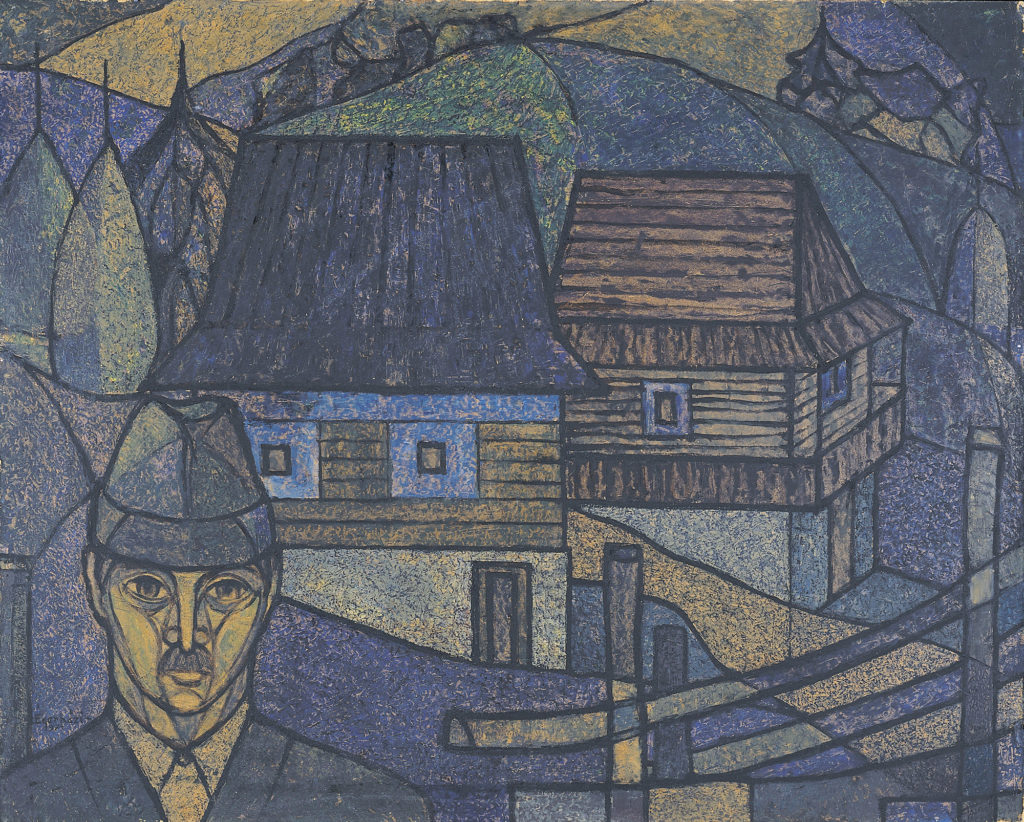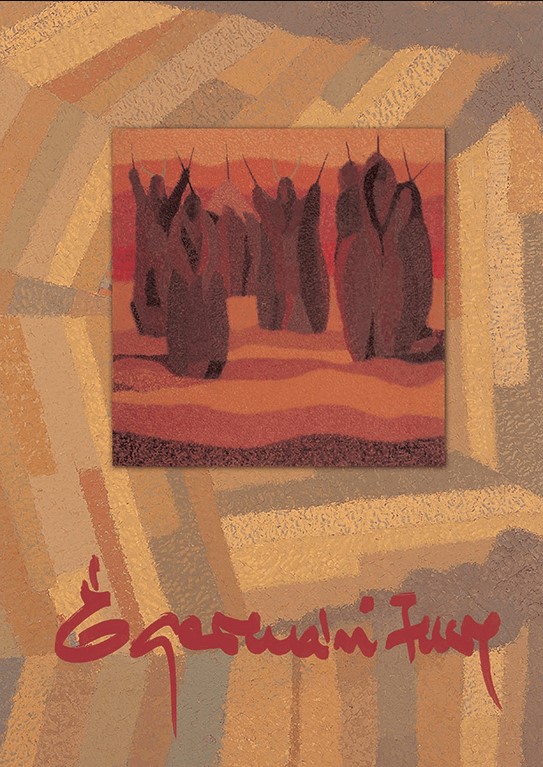In his autobiographical memoir, Imre Égerházi writes that among his ancestors there were also painters (Képírók) who received confirmed nobility from Transylvanian princes for their service. In their coat of arms, the knight holds a sword in his left hand and a brush and palette in his right. The roots of the instinctive interest and ability of this lad, which nurtured his talents, branched far into space and time, until from the first pictures drawn on clean walls and fences with a box of crayons he received as a gift he reached the brush and palette.
Inherited from the ancestors of Hajdús and Képírós, the talent lingered on for centuries to resurface in him with the unbridledness of the free Hajdús, to acquire all the knowledge needed to become a painter himself.
He learned with tenacious consistency from everyone and everywhere: street painters, standing in front of windows, going to museums, in free schools; and from the contemporaries he encountered during his preparation as an artist. He was not bitter by unsuccessful attempts and failures, nor by the fact that he could not start his studies at the desired painting school in Budapest.
As a child, he pressed a little oil paint into his left palm to be with him all day and smelled it happily, absorbing the scent of paint during the day. It also gave him strength, as he was determined: “I will succeed …”
He considered József Menyhárt as his master in the orientation between the influences collected from many places and in the acquisition of the learnable part of the profession and techniques.
He developed a well-distinguished, recognizable picturesque world and individual pictorial writing.
We cannot say this was without outside influence: the order of editing his paintings was shaped by folk art, Art Nouveau, his color culture was influenced by post-impressionism, his artistic behavior was shaped by art of the Hungarian Great Plain, but the end result characterizes as Imre Égerházi’s painting. But his works are peculiar not only in the technical and editorial, compositional characteristics, but also in the choice of subject inspired by inner urge and their sincerity.
Originally and decisively, what shaped his art is his personal experiences considering life, landscape, and community. He elaborates on his rich experience: the villages and people of his childhood, the hills and mountains of Transylvania, the villages hidden in their lap with their houses, the richness and variety of the Hungarian landscape, the flatlands and his homeland.
He organizes, shapes, rewrites, edits the themes to be painted through his creative filter, and abstracts, redacts, condenses, simplifies, sets the image elements into a new system. The planar editing, the barely articulation of the image plane, allows him to display distant events, memories and fresh impressions in time and space in the same dimension.
He equates and juxtaposes the mosaics with the value of generalization, because for him emphasis was on expressing the mental connection between these.
Nor does it contradict him if, for the sake of what he has to say, he highlights one scene at a time, first among equals, by arranging the others around him. Montage-like editing helps to flood the message.
Despite the definite artistic editing, construction and abstraction, his images are not alien or abstract either, because the phenomena, landscapes, people, houses, tools and signs highlighted with the intention of the expression evoke real content. Behind the apparent impatience of abstraction lies a very palpable artistic attitude in his intention, roots, faith, and stance. Although not captivated by passion while painting, this epic calm performance is not without emotion. (Dramatic tones are still common in his early paintings, characterized by a different way of toning and a darker use of color.)
The block-like, contoured, powerful shapes, figures and subtler, more intimate moods are all built up with the surface treatment performed with tiny, atomic elements, which – making his paintings characteristic – applied with a special pointillism.
This way of color construction serves the artistic saying: the detailed meticulousness of storytelling weaves the viewer and is weighed down by non-summative statements. The details are harmonized throughout the entire surface of the image field.
Hajdúk I.
oil, board, 185×600 cm
1987
His method of creating his paintings, montage-like image editing, helped him design and paint his large panneaus. The creation of Hajdúk I. and Hajdúk II. meant the realization of his old desire: to utter his creed before his ancestors, with his own artistic means, and to capture their memory. I am reminded when he told me with shameful joy, not boasting but proud that, based on a reproduction of the Hajdú paintings, the French had commissioned him, a Hungarian painter, and head of the Saint Michel artists’ colony, to capture the Franco-Spanish Peace Treaty of 1598 in Vervains, in a monumental painting, for the event’s anniversary. They weren’t disappointed.
He served, not only with the colorful palette of his art but also with infinite energy, the organization and introduction of art life of his homeland on domestic and international levels. He took the initiative and contributed to the revitalization of art colonies and creative communities – and then tirelessly carried out the thousands of things that went with it – and he was the intellectual director of the creation of art ensembles.
He has a series of paintings he took after he returned from the gates of the afterlife after a heart attack. Many have already expressed, in words, the experience of something similar, but the images he painted are the visions of a painter and are influenced by the power of authenticity.
These otherworldly messages are symbolic to me: the way he wanted to become a painter, she succeeded, his nobility was confirmed, and where his is now, I think, he still is.
22 October 2002, Budapest
Prokai Gábor




